Top 9 AI Productivity Tools for Digital Workflow Management
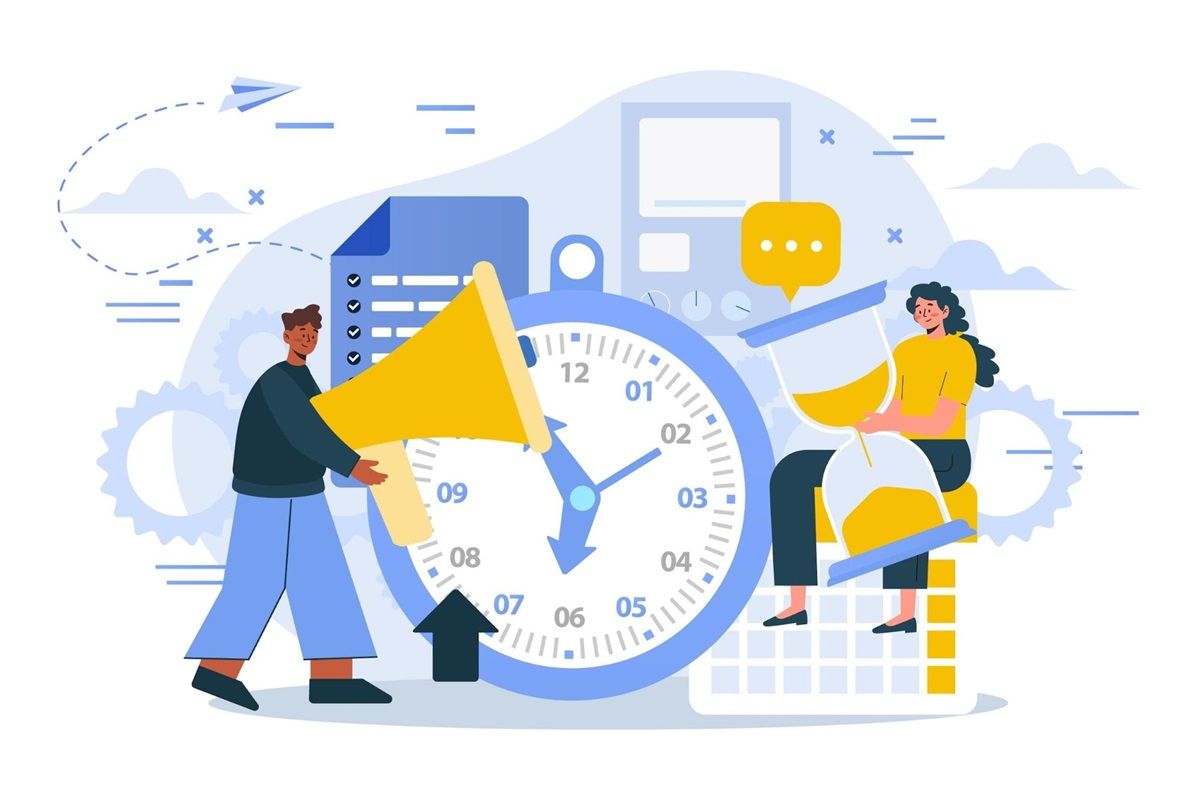
Your workday fills up fast with emails, meetings, and endless time-consuming tasks. That’s why more teams turn to AI productivity tools.
These platforms use artificial intelligence to handle repetitive work, reduce manual effort, and give knowledge workers the time to focus on strategy and creative projects. You’ll find them everywhere: writing, scheduling, automation, and more.
In this article, you’ll learn the best AI productivity tools today and how they improve daily digital workflow automation.
Start for free with Activepieces and watch your productivity skyrocket!
What Are AI Productivity Tools?
AI productivity tools are applications powered by artificial intelligence that assist in saving time and boosting efficiency.
With machine learning (ML), they get smarter as you use them. For example, an AI assistant for scheduling, for instance, learns your habits and suggests better times.
Through automation, they can draft content, summarize meeting notes, or act as an AI email assistant that clears your inbox in minutes.
Predictive analytics lets them flag risks in project management, while natural language processing (NLP) allows them to create summaries or drafts from plain text.
These tools show up in many areas:
- Writing and generative AI content
- Team communication
- Task management
- Research and knowledge management
- Complex workflows in project management
- Data analysis with tools like Julius AI
How AI Productivity Apps Improve Workflow Automation
Old-school automation follows a fixed set of rules: “If X happens, do Y.” But work doesn’t really flow in neat little boxes, right?
An AI productivity app isn’t just a rule-following system. The AI adds context, learns patterns, and adjusts in real time. It takes on time-consuming tasks so you can save hours and focus on the bigger stuff.
For example, in project management, an AI agent looks at your deadlines and workload, then tells you where things might fall apart before they actually do. In finance, AI scans invoices and catches fraud attempts way faster than a human could.
Customer service teams lean on AI chatbots to answer routine questions, which gives you time to solve problems that actually need judgment. HR uses it for resume screening, and sales teams lean on it to qualify leads.
To sum up, these apps let knowledge workers work smarter through workflow automation. They cut down on manual effort, protect your focus time, and even help manage complex workflows that would normally eat up an entire afternoon.
9 Best AI Productivity Tools for Smarter Workflows
There’s no shortage of options out there, but some stand out as the best AI tools for improving how you get things done. Here are nine that make a real difference:
1. Activepieces
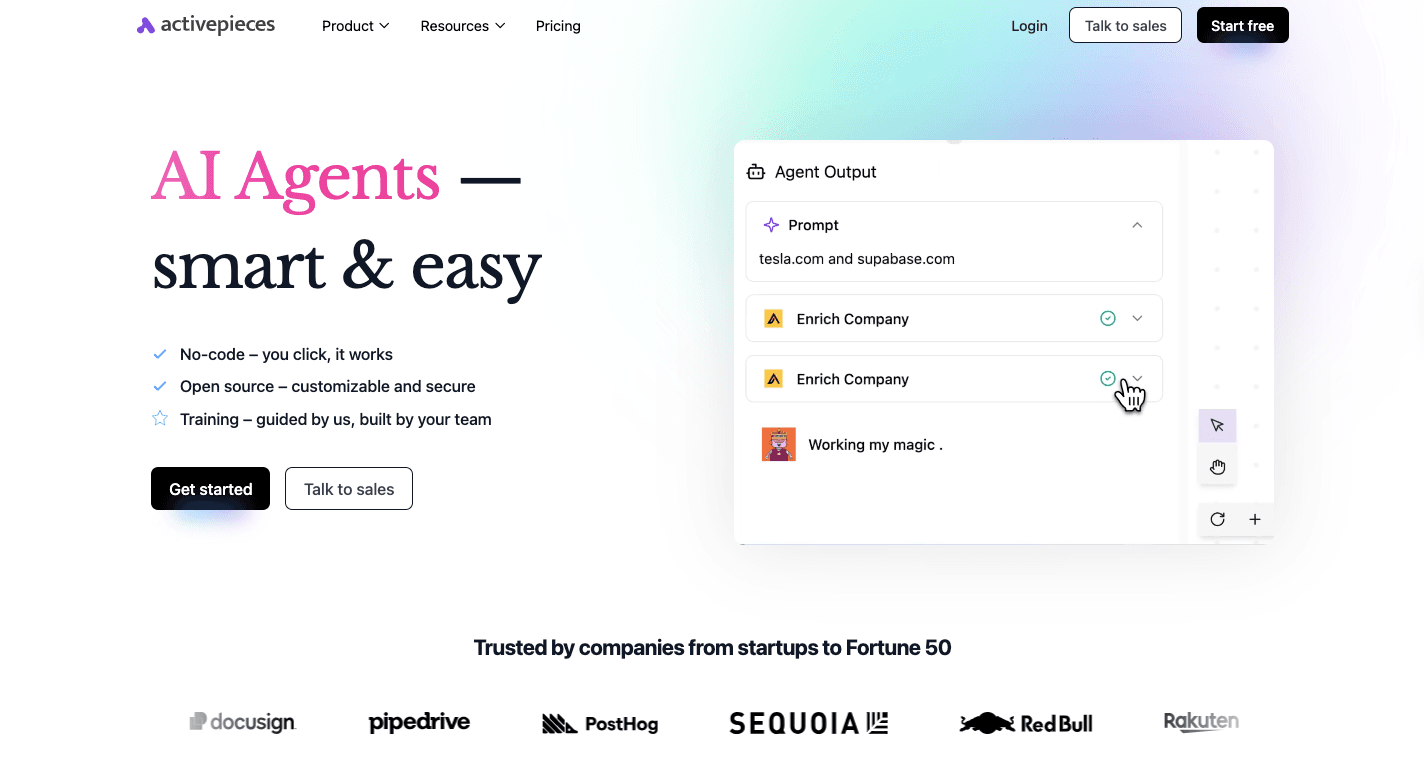
Activepieces gives you AI agents that can understand context and take action across systems. It can actually process information, make a decision, and complete the task.
A customer support flow, for example, reads an incoming email, uses AI to understand the request, drafts a response, updates the helpdesk ticket, and notifies the right person in Slack or Microsoft Teams.
Every integration, called a piece, is written in TypeScript and can be customized. For non-technical users, there’s a drag-and-drop builder that makes creating workflows feel simple.
Security-conscious organizations also like that it can be self-hosted.
Regardless of whether you’re automating lead handoffs, running content distribution, or just keeping calendars synced with Google Calendar, Activepieces acts like a personal digital workforce running in the background.
Key Features
- AI agents – Context-aware “workers” that analyze input, make decisions, and carry out tasks.
- Workflow builder – A visual drag-and-drop tool for non-technical users, plus TypeScript support for developers.
- Tables – A lightweight database built into the platform to store data for workflows.
- Human-in-the-loop – Add steps where human approval or input is required.
- AI Copilot – An in-builder assistant that helps create flows faster with natural prompts.
- AI SDK – Build your own custom AI agents and extend how they behave.
- Security controls – Options for self-hosting, branding, and enterprise-grade governance.
Use Cases
Activepieces covers multiple areas of work through automation. The platform removes repetitive steps of more than one task:
- Agents can analyze incoming tickets, assign priorities, and draft responses.
- A marketing team can manage campaign data, update CRMs, and send follow-ups automatically.
- A sales team can score leads, update records, and send outreach emails without manual steps.
- Use it to sync calendars, coordinate meetings, or keep multiple teams aligned across tools.
- Automate publishing tasks, including scheduling posts, updating CMS entries, or tagging data.
- Agents can clean, organize, and move data between apps like spreadsheets, databases, and CRMs.
- Route alerts into channels like Slack or Microsoft Teams when certain conditions are met.
Contact sales and learn how you could use Activepieces to improve your workflow.
Integrations
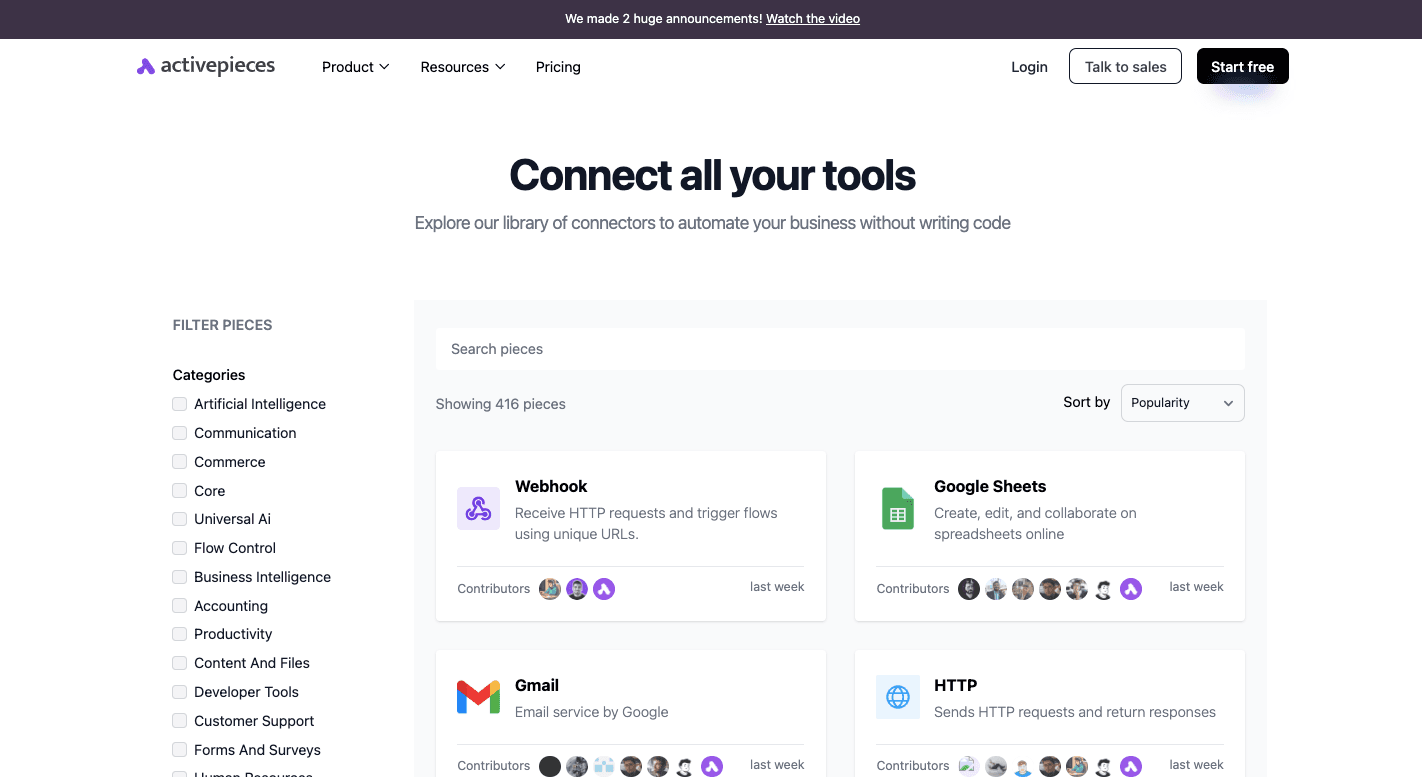
Currently, Activepieces offers over 421 pre-built integrations. These cover AI providers, CRMs, productivity platforms, and finance apps. The catalog is constantly expanding because it’s open source, and the community contributes new pieces daily.
You get to connect to your existing tools, such as:
- OpenAI
- Google AI Studio
- ElevenLabs
- Slack
- ClickUp
- Microsoft Teams
- Discord
- Google Sheets
- Notion
- Google Calendar
- WordPress
- HubSpot
The community-driven design means the library isn’t static. Every week, new pieces are added or improved. That’s an advantage over closed competitors.
For enterprises or fast-moving teams, that means you’re never stuck waiting for official support to connect the apps you need.
Pricing
Activepieces keeps pricing simple by avoiding per-task billing. You don’t get charged more as your usage grows, which makes costs predictable for small teams and enterprises alike.
The Free cloud plan includes a thousand tasks a month, two active flows, and community support. On the other hand, the Plus plan is $25 per month and includes unlimited tasks under fair use, more active flows, AI credits, and email support.
For $150 per month, the Business plan offers 50 active flows, API access, and up to five users. Enterprises can request custom pricing with dedicated support, branding, and advanced controls.
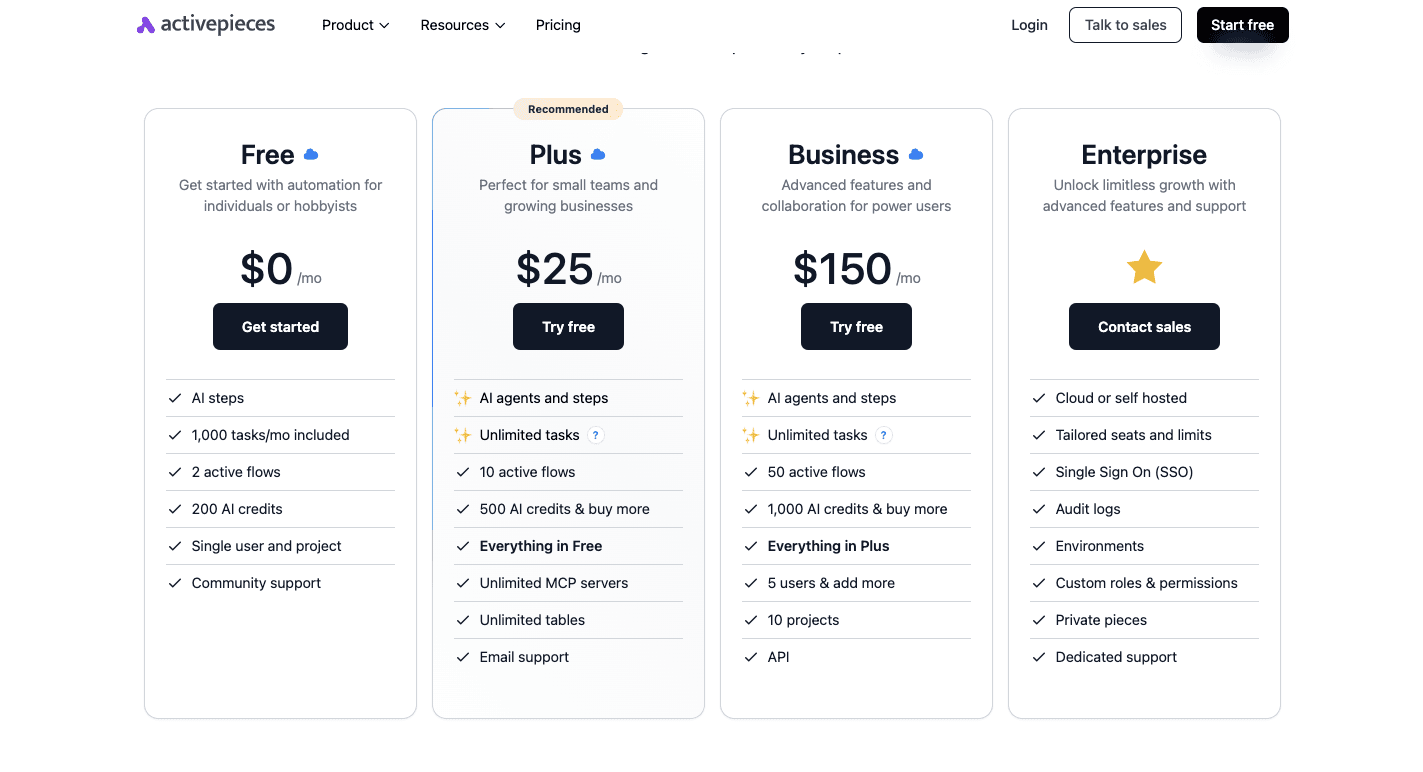
There’s also a Community Edition, which is self-hosted and free. It removes task limits but requires you to manage your own servers. For companies with technical teams, this is a cost-efficient way to run automation privately.
Overall, compared to existing workflows with Zapier or Make, Activepieces provides more room to grow without surprise billing.
Get in touch with sales and unlock the full potential of Activepieces for your team!
2. Notion AI
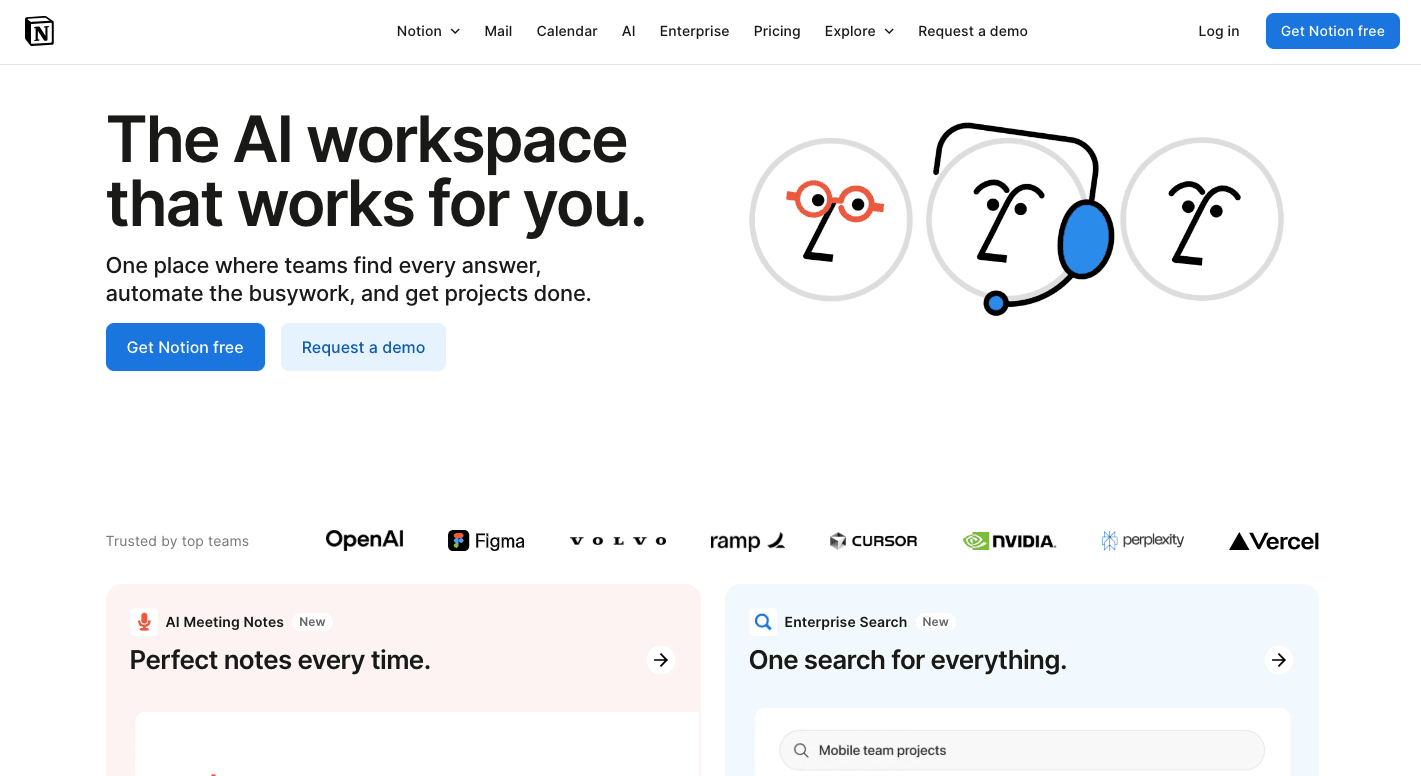
Notion AI combines artificial intelligence directly into Notion’s workspace. It works as an AI assistant that helps with writing, planning, and automating project management without forcing you to switch tools.
You can draft blog posts, create to-do lists, or summarize meeting notes on the same page. Since it has context from your workspace, the answers and drafts it produces feel more relevant than generic tools.
For teams, Notion AI supports knowledge management by pulling insights from documents, databases, and linked apps like Slack, Google Drive, or Google Meet. It also generates smart summaries of long notes.
The only catch is the learning curve. New users often find Notion tricky to set up, and the AI only works well once everything is organized.
Key Features
- Content generation – Draft emails, articles, or agendas from a short prompt.
- Text rewriting – Change tone, shorten or expand writing, or simplify complex wording.
- Translation – Convert text into multiple languages without leaving the app.
- Idea support – Suggest outlines, brainstorm lists, or create starter drafts.
- Summarization – Produce summaries for long documents or articles.
- Action item extraction – Pull tasks directly from meeting notes.
- Workspace Q&A – Answer questions by searching your pages and databases.
- Database automation – Auto-generate summaries, tags, or categories in large lists.
- Enterprise research – For higher plans, search across connected apps and get answers with citations.
Pros
- Integrated directly into the Notion workspace.
- Cuts down on repetitive, time-consuming tasks.
- Context-aware answers from your own documents.
- Convenient for teams already using Notion daily.
Cons
- Extra subscription cost on top of the base plan.
- Occasional inaccuracies or “hallucinations.”
- Steeper learning curve compared to other tools
- Performance lag with large databases.
Pricing
Notion AI is an add-on across all subscription levels. The Free plan covers basic Notion use, like forms, sites, databases, and mail syncing. Then the Plus plan costs $12 per user each month and includes collaborative blocks, unlimited uploads, and custom forms.
The Business plan costs $24 per user each month, adding private spaces, domain verification, and premium integrations. For larger companies, the Enterprise plan offers custom pricing with advanced security and integrations.
3. Canva AI
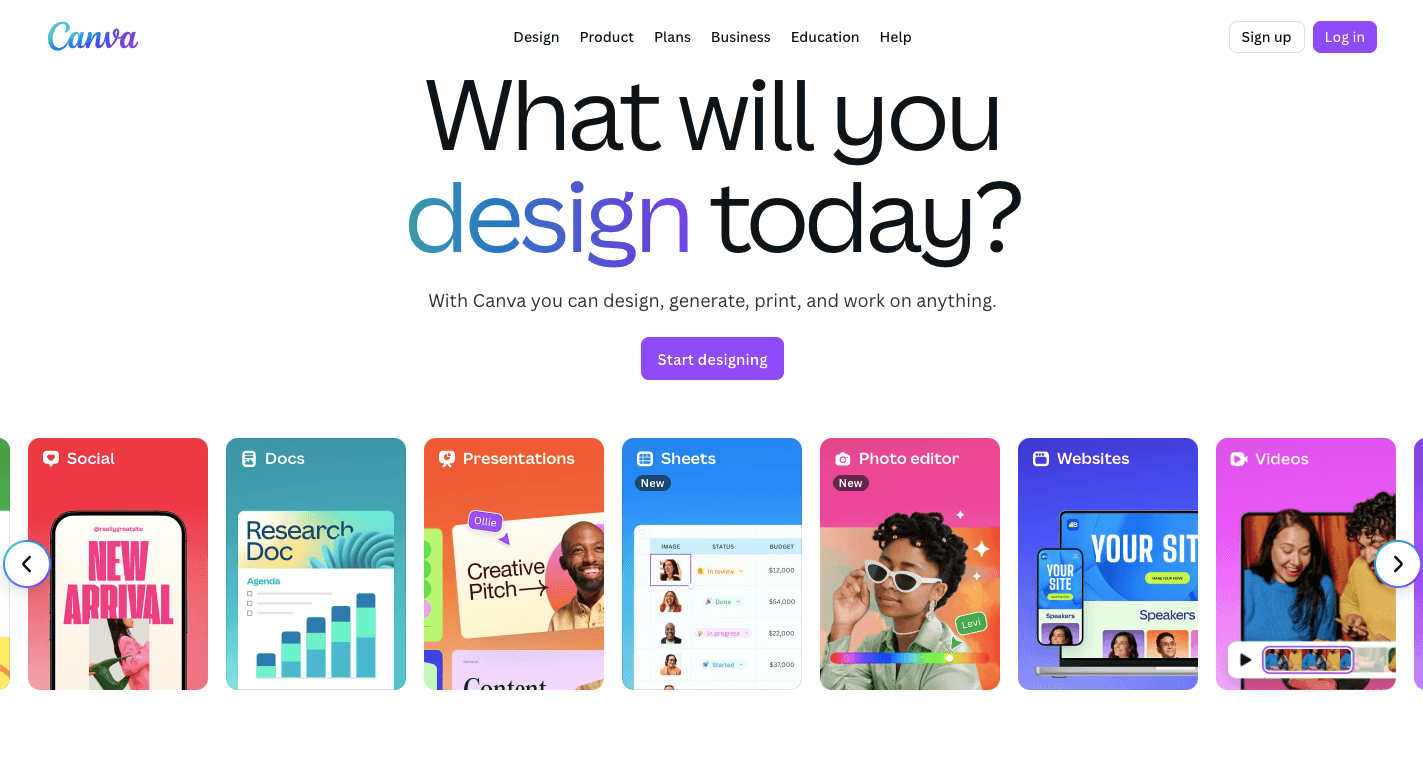
Canva added AI into its design platform with Magic Studio. The AI side covers writing, design, audio, and video in one place, so you don’t need to keep switching to other tools.
Many people use it for quick design work, but it has evolved into a tool that also handles social media management and even light project planning. You can treat it almost like a creative task manager, since it takes care of small jobs while you focus on larger campaigns.
Under the hood, Canva AI runs on large AI models and connects with AI technology from Google and OpenAI. You type a prompt, and the system can create images, run image generation, or build clips for video creation.
It also supports audio, so you can add narration or background sound with its voice and music generation tool. A lot of smaller teams lean on it to create marketing materials, training slides, or social media posts without outside help.
Key Features
- Magic design – Suggests templates and layouts from a short text prompt.
- Magic media – Generates images and short clips from text descriptions.
- Magic edit – Adds, changes, or removes objects in a photo using a prompt.
- Magic grab – Separates a photo’s subject so you can move or resize it.
- Magic eraser – Deletes unwanted objects and fills the space automatically.
- Magic expand – Extends the edge of an image and creates a matching background.
- Magic write – Functions as an AI writing assistant for blogs, emails, and social media posts.
- Magic switch – Resizes or reformats designs for different platforms.
- AI video generator – Produces clips with audio directly from a prompt.
- AI voice generator – Offers AI voice and music generation for narration or soundtracks.
Pros
- Easy for beginners to pick up.
- Combines design, copy, and editing in one place.
- Saves time on repetitive edits.
- Effective for branding and social media management.
Cons
- Limited controls for advanced designers.
- The free version comes with strict limits on AI credits.
- Needs an internet connection to run.
- Designs look similar across users if templates aren’t adjusted.
Pricing
Canva includes Magic Studio inside its normal subscription plans. The Free version gives you a small batch of credits for Magic Write and Magic Media, which covers both text and image generation.
Pro costs $15 per month and comes with hundreds of AI actions for writing and visuals, plus brand kits, stock photos, and publishing options. Teams pay $10 per user per month (with a minimum of three users) and get the same AI limits as Pro, but with collaboration features added.
Enterprise customers negotiate custom pricing that adds more security and admin controls. Canva also gives full Pro access at no charge to schools and nonprofits that qualify.
4. Perplexity
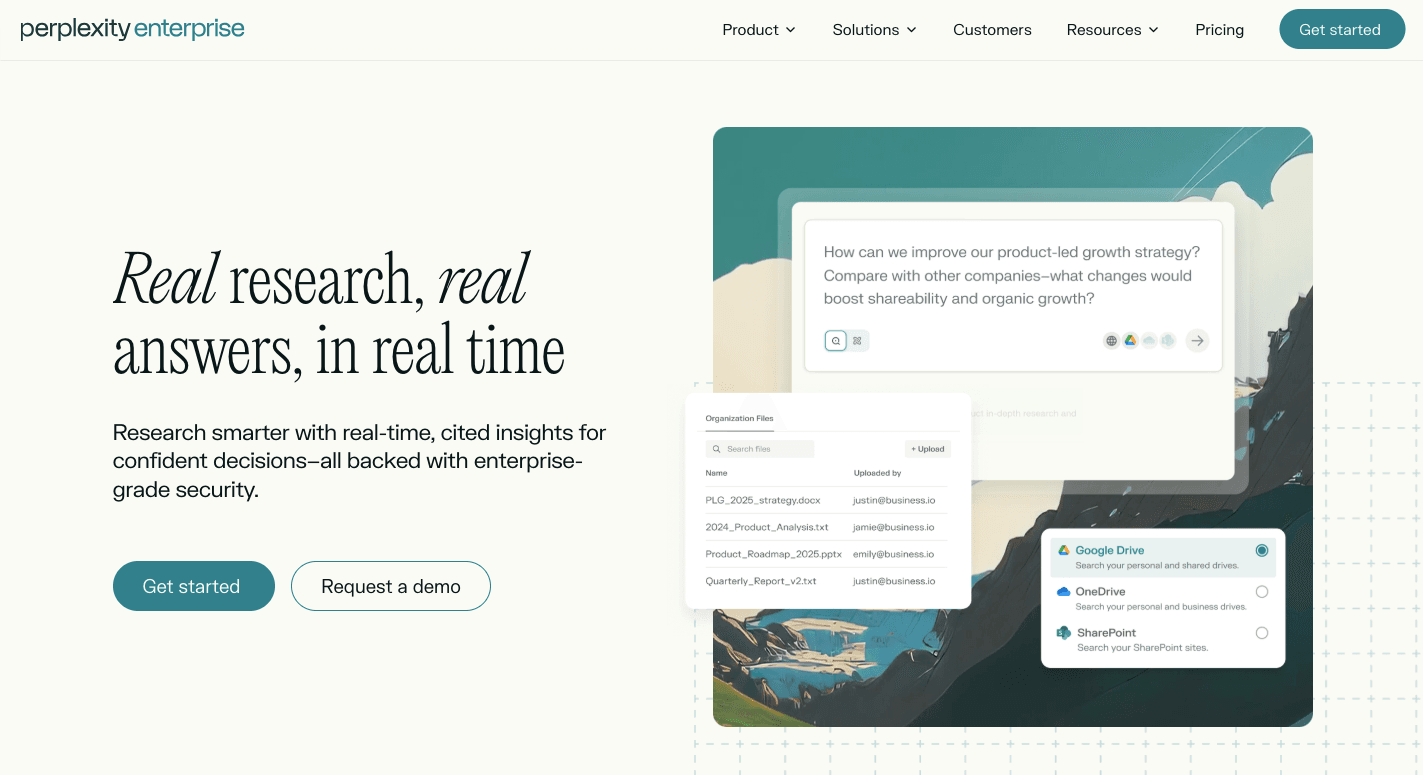
Perplexity is a conversational AI search engine that reads through sources and gives you a direct summary with citations. Think of it as Google AI Overviews or Arc Search, but more interactive.
It pulls data from live web pages, organizes it, and delivers answers you can trust because each point comes with a reference. For anyone doing research, it cuts out the extra steps of scanning through ten different Google search results.
Students and professionals like it because it can break down complicated topics quickly, while content teams use it to draft articles or outlines with sources attached.
The Deep Research mode runs dozens of searches in the background and pulls everything into a full report, which saves a ton of time compared to doing it manually. The Pages feature turns a set of results into a formatted article.
Perplexity also integrates with other apps and has an API for developers who want to pull its summarization into their own tools.
Key Features
- Conversational AI – Answers in plain language and keeps context across questions.
- Real-time search – Pulls fresh data from the web instead of only relying on training data.
- Cited sources – Every answer links back to the original content.
- Search modes – Focus searches on news, research papers, videos, or social platforms.
- Deep Research mode – Runs multi-step queries, reads through many sources, and compiles full reports.
- File uploads – Analyze PDFs, docs, or spreadsheets alongside online data.
- Collections – Save and organize threads into project folders for collaboration.
- Perplexity Pages – Turn a search into a formatted article with sections.
- Multiple AI models – Pro users can choose between providers like OpenAI or Anthropic.
Pros
- Direct answers with full citations.
- Speeds up research and fact-checking.
- Supports file uploads and analysis.
- Performs well for knowledge workers handling reports or content projects.
Cons
- Can produce occasional inaccuracies.
- Expensive at higher tiers.
- Collaboration tools still feel basic compared to dedicated platforms.
- Dependent on third-party AI models.
Pricing
Perplexity has a Free plan that gives you unlimited quick searches and a small batch of advanced searches each day. The Pro plan is $20 per user each month and opens up unlimited Pro searches, premium AI models, file uploads, and the ability to generate images or videos.
Enterprise Pro costs $40 per user monthly and adds team management, private document search, and stronger privacy controls. For large organizations, the Enterprise Max plan costs $325 per user monthly and adds higher limits, more integrations, and full admin features.
5. Motion
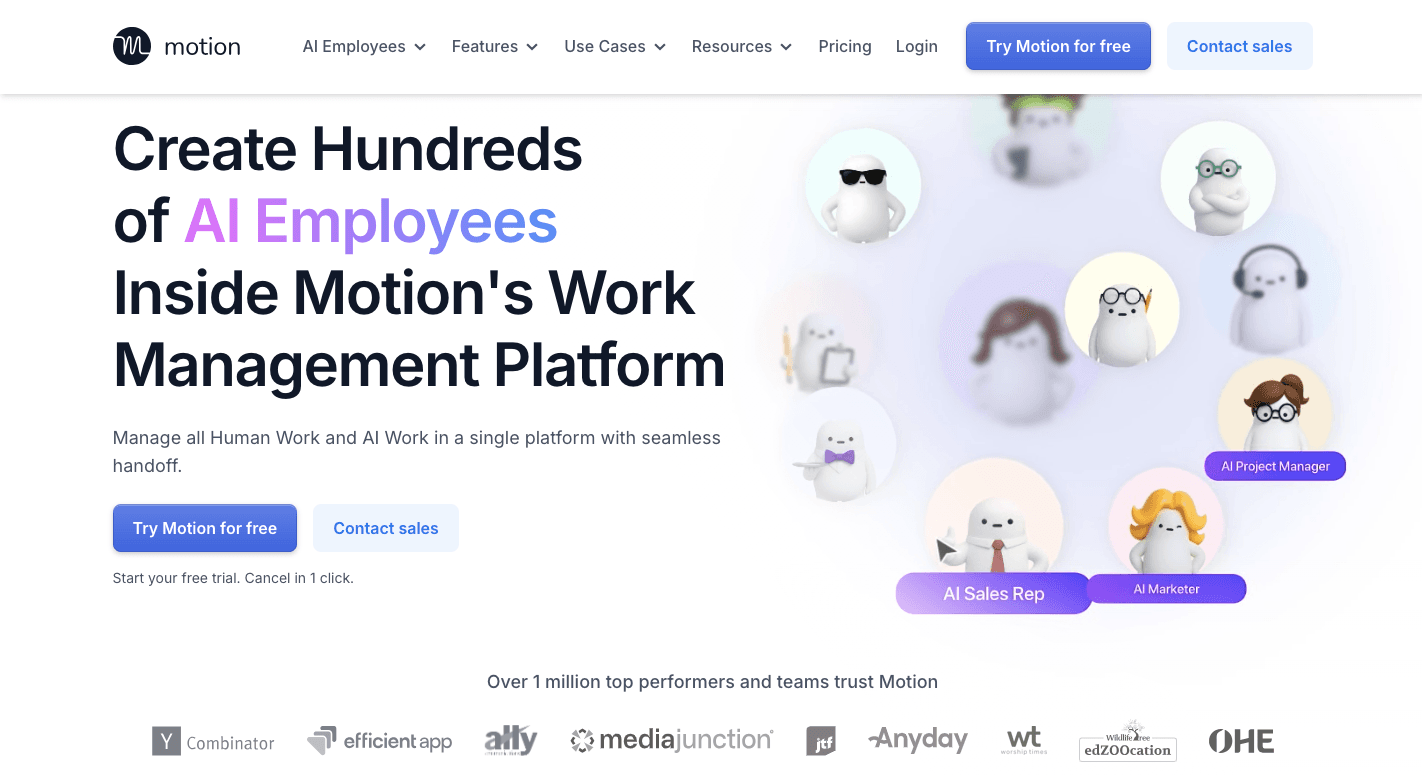
Motion is more than just a basic planner that logs events. It combines your calendar, tasks, and projects into one app.
The platform uses AI to arrange your day automatically and reshuffle when things change. You can add tasks, meetings, and deadlines, and Motion takes care of the rest.
The platform handles task management by prioritizing deadlines and slotting them into open blocks. When something unexpected arises, the system handles scheduling for you with the help of AI, such as reworking the plan when meetings run long or new tasks appear.
It also operates as a meeting assistant, with a meeting notes feature that records and summarizes calls. Those summaries generate new tasks and add them to your calendar, which makes it easier to keep projects moving.
Task creation for complex projects is even faster due to dependencies and templates. Some people use it for work, while others treat it as a personal AI tool to organize their private lives.
Key Features
- AI-powered scheduling – Blocks out tasks on your calendar based on deadlines and priorities.
- Dynamic rescheduling – Rearranges your day automatically when new tasks or meetings appear.
- Focus time protection – Builds in uninterrupted blocks for deep work.
- Automated booking links – Creates links so others can schedule time without back-and-forth emails.
- Meeting assistants – Offers a meeting notes feature that records, transcribes, and generates action items.
- Unified calendar – Combines Google, Outlook, and iCloud calendars into a single view.
- AI-driven prioritization – Decides which tasks to schedule first and predicts risks of missing deadlines.
- Task creation and dependencies – Supports linked tasks and project templates.
- Integrations – Connects with Slack, email, Google Meet, and more to keep everything synced.
- AI employees – Higher plans add advanced assistants that draft emails, generate documents, and manage other digital work.
Pros
- Removes manual scheduling and saves time.
- Combines calendar, tasks, and projects in one place.
- Protects focus by carving out time for deep work.
- Predictive alerts for deadlines and project risks.
Cons
- Users who want manual control may resist automated scheduling.
- Some find the interface overwhelming.
- Limited native integrations compared to other project management tools.
- The mobile app lacks some features from the desktop version.
Pricing
The AI Workplace and the AI Employees Starter plans cost $29 and $49 per month, respectively, but these two plans are available through annual billing only. Both offer a single seat, and AI credits vary from 1,000 to 10,000
The Light plan costs $148 per month and covers three seats, with 25,000 credits and access to scheduling, tasks, projects, docs, and meetings. The Standard plan is $446 per month with 10 seats, more credits, and 20 integrations.
Meanwhile, the Plus plan runs $894 per month for 25 seats, larger allowances, and priority support. Enterprise packages are custom-priced, which gives you more seats, higher limits, and security options.
Across all levels, you get access to its calendar automation, project tools, and advanced AI helpers.
6. ChatGPT
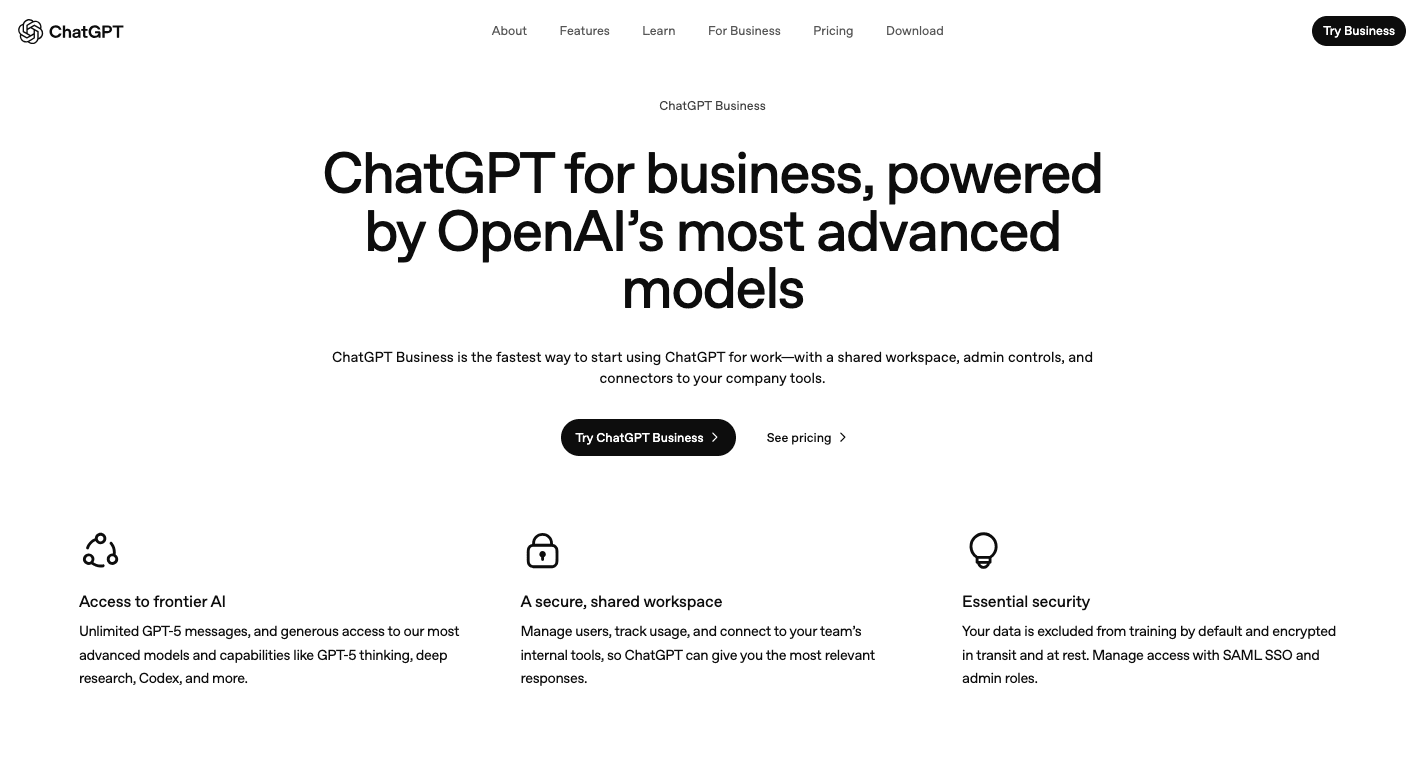
ChatGPT runs on advanced AI models that simulate conversation and generate text in a way that feels human. It writes, answers questions, explains code, and even helps brainstorm ideas.
Since it’s based on natural language processing, it understands prompts and responds in context.
Beyond text, newer versions have broader AI capabilities. The system analyzes files, pulls in live information, and creates custom responses with your instructions.
It also works with images. For example, it can generate them when you need visuals for a project draft or presentation.
For many, ChatGPT saves time by handling tasks that would normally take hours. Developers use it for debugging, students use it for explanations, and teams use it for drafting reports or brainstorming campaigns.
Key Features
- Natural language processing – Understands instructions and responds in conversational style.
- Answering questions – Explains topics, summarizes documents, and clarifies complex ideas.
- Creative writing – Produces stories, essays, scripts, and more.
- Code help – Writes and debugs code across multiple languages.
- Multilingual support – Can translate and converse in many languages.
- Advanced multimodal tools – Later versions handle text, images, and even voice.
- File analysis – Can read spreadsheets, PDFs, and presentations to extract insights.
- Browsing and research – Paid tiers can connect to the internet for current information.
- Image generation – Uses DALL·E to turn prompts into visuals.
- Custom GPTs – Users can design specialized versions for specific needs.
Pros
- Feels conversational and natural.
- Provides quick answers with context.
- Helpful for brainstorming and creative tasks.
- Available 24/7 with no wait time.
Cons
- Tends to give wrong or misleading answers at times.
- Responses occasionally lack depth on very complex tasks.
- Prone to biases in its training data.
- Risk of over-reliance, especially for students.
Pricing
ChatGPT has several pricing plans. The Free tier lets anyone use GPT-5 with limited access to advanced features like file uploads and image generation. The Plus plan costs $20 per month and provides extended access, faster responses, and the ability to create custom GPTs.
Pro is $200 per month, while the Business plan runs at $30 per user per month and includes security, admin controls, and shared workspaces.
The Enterprise plan comes with custom pricing and is made for large teams that want unlimited usage, advanced admin tools, and full access to OpenAI models.
7. Any.do
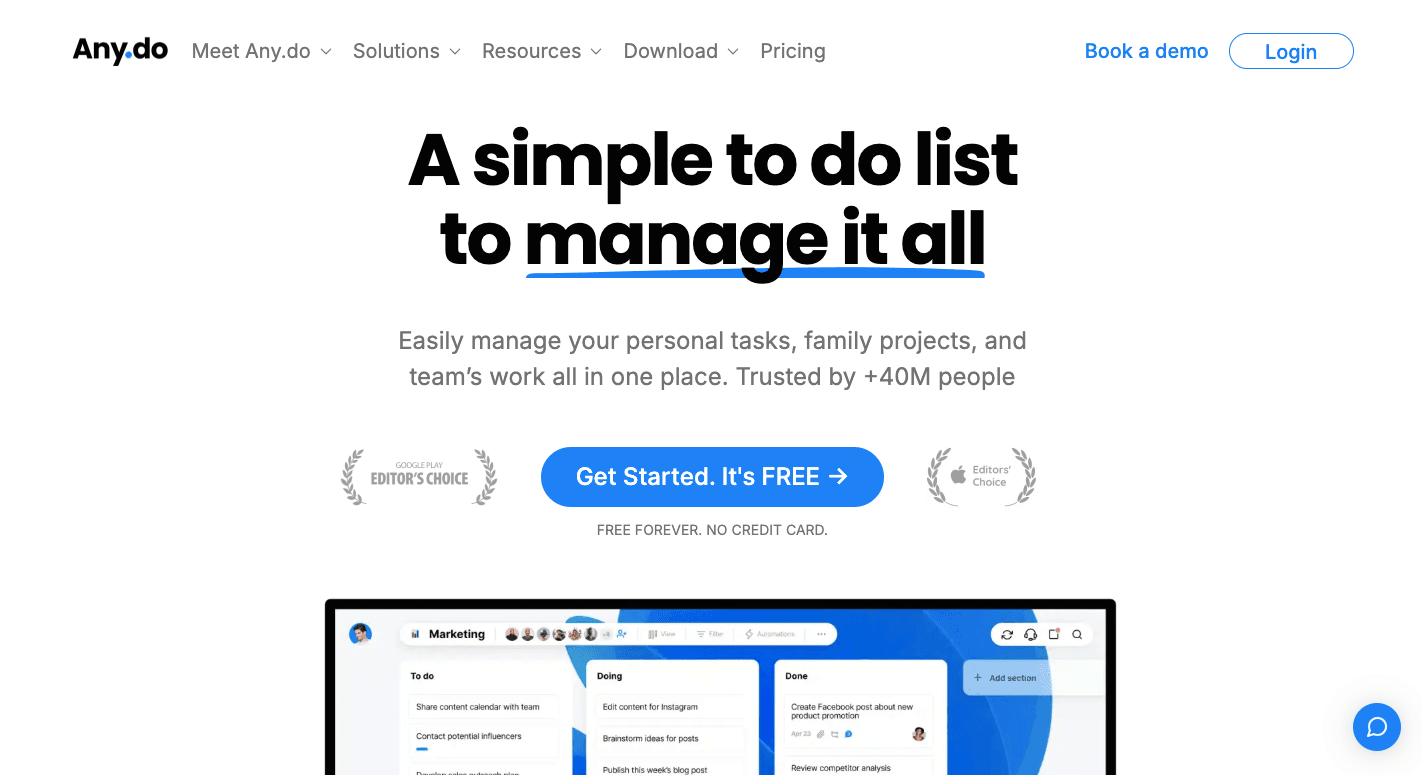
Any.do combines a calendar, to-do list, and daily planner. Rather than just storing tasks, it uses AI to suggest, organize, and break down what you add.
When you create a task, the system doesn’t just log it. You can take a look at AI suggestions and click to enlarge your list with subtasks that make the objective easier to manage.
For example, adding “plan a trip” triggers related items like booking flights, searching hotels, or drafting an itinerary.
Shared boards let you collaborate on simple projects, and the AI adapts by suggesting relevant checklists. Outside work, it even has a “Smart Grocery List” that groups shopping items by aisle, which saves time during store runs.
For daily focus, Any.do includes a “My Day” review that asks you to choose priorities and a “Focus Mode” that encourages staying on task with visual cues.
Even if you use it for personal errands, family chores, or work tasks, Any.do reduces the mental load of organizing.
Key Features
- Task management – Add tasks, subtasks, and notes, then group them into lists or projects.
- Customization – Use tags, labels, and themes to prioritize and organize work.
- My day – A daily planner that prompts you to choose priorities each morning.
- Moment review – A mobile-only feature that shows today’s and overdue tasks.
- Reminders – Time-based, recurring, or location-based alerts to stay on track.
- Focus mode – A timer with gamified visuals to encourage deep work.
- Shared boards – Collaborate with others using Kanban, calendar, or table views.
- Templates – Access to a hundred starter templates for common workflows.
- Integrations – Connect with apps like WhatsApp, Google Calendar, and Slack.
Pros
- Syncs across all major platforms.
- Combines calendar, tasks, and planning in one.
- Helpful AI-powered breakdowns and lists.
- Works for both personal and small team use.
Cons
- Lacks advanced task management options for complex projects.
- Syncing between devices can be inconsistent.
- The desktop version feels less polished than mobile.
- No built-in time tracking.
Pricing
Any.do has a Free plan with unlimited tasks and lists but comes only with basic features. The Premium plan is $7.99 per month and adds recurring and location-based reminders, WhatsApp integration, AI-powered subtasks, and more customization.
The Family plan is $9.99 per month (up to four users), which creates a shared space for chores, groceries, and events for up to four members.
The Team plan is $7.99 per user per month. It adds shared project boards, multiple viewing options like Kanban, admin controls, and over 100 workflow templates.
8. Buffer
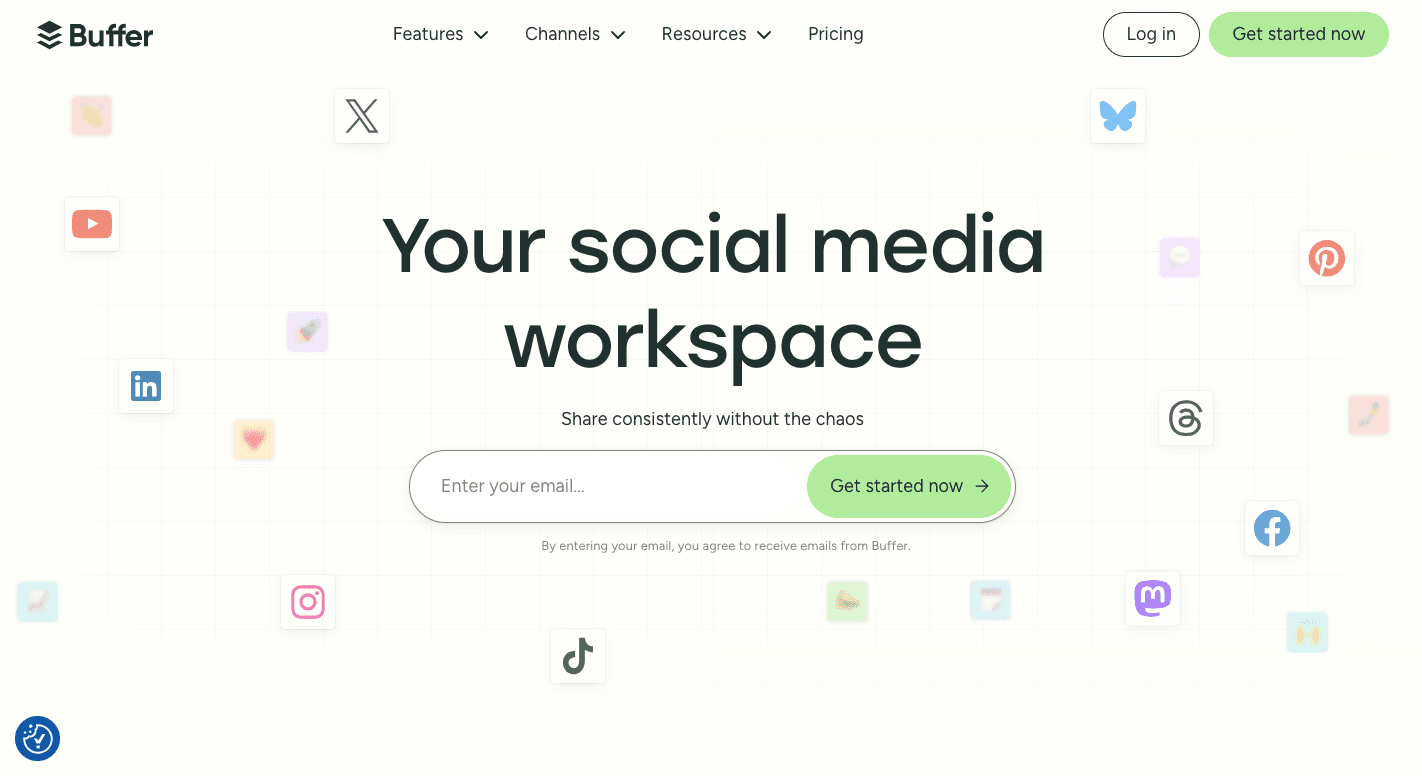
Buffer is built for social media management. It helps you plan, schedule, and publish posts across platforms like LinkedIn, Instagram, TikTok, and X (Twitter).
In addition to scheduling, it features an AI assistant that handles the creative aspects of posting. This means it can generate ideas, draft posts, or adjust content for different channels.
Using machine learning, it handles some of those time-consuming and repetitive tasks for you. For example, you can feed it a rough idea, and it’ll produce multiple post drafts in different tones. It can also reformat one post to fit multiple channels to save a lot of manual effort.
For marketers, small businesses, and creators, it simplifies keeping a consistent online presence.
Key Features
- Multi-channel scheduling – Manage posts across Instagram, Facebook, LinkedIn, TikTok, and more.
- Visual calendar – Plan campaigns and see everything at a glance.
- Channel-specific formatting – AI adjusts tone and length depending on the platform.
- Hashtag manager – Save and insert groups of hashtags quickly.
- Content tagging – Track performance by campaign or topic.
- Post analytics – Measure reach, impressions, and engagement.
- Audience insights – Learn follower demographics and behavior.
- Engagement dashboard – Reply to Facebook and Instagram comments in one place.
- AI assistant – Generate ideas, draft posts, rewrite text, and repurpose content.
- Integrations – Includes Canva, RSS feeds, and browser extensions for faster content curation.
Pros
- Simple and intuitive interface.
- Unlimited AI credits even on the free tier.
- Drag-and-drop content calendar makes planning easy.
- Good for creators and small teams that want quick posting.
Cons
- Analytics are basic compared to competitors.
- Engagement tools are limited.
- Occasional glitches with scheduled posts.
- The AI assistant is less advanced than some rivals.
Pricing
Buffer’s pricing is based on how many channels you connect.
The Free plan lets you manage up to three channels with ten scheduled posts per channel. Paid plans start at $6 per channel per month with the Essentials plan, which unlocks unlimited posts, advanced analytics, and the engagement inbox.
The Team plan is $12 per channel per month and adds unlimited users, content approvals, and collaboration features. All paid plans include the AI assistant and access to customer support.
9. Grammarly
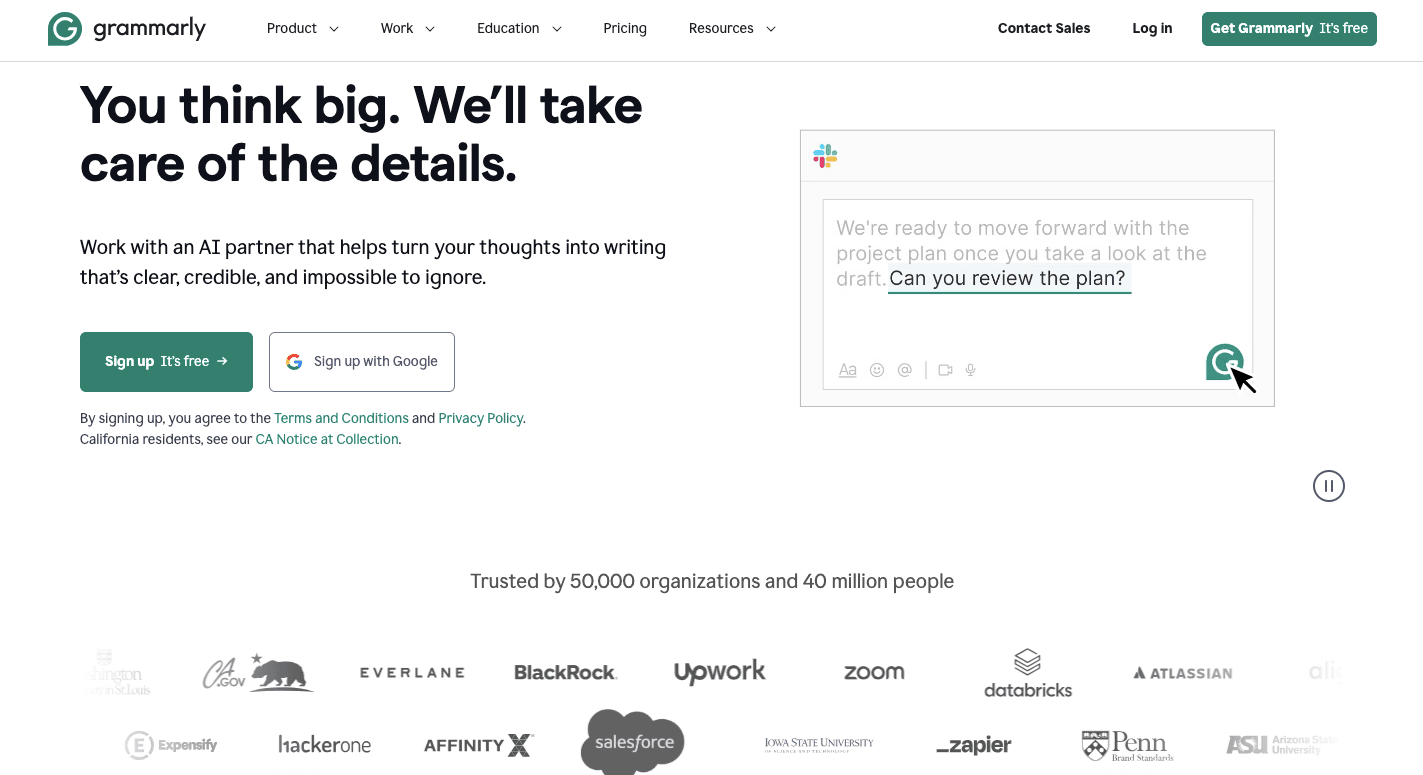
Grammarly functions as an AI writing assistant that checks your text for errors and style improvements in real time.
Aside from looking for grammar mistakes, it also suggests changes for tone, clarity, and word choice. You can use it on the web, as a desktop app, or as a browser extension, which means it works almost everywhere you write, including Google Docs, Outlook, and social platforms.
The system runs on cloud-based algorithms trained on millions of sentences. When you type, Grammarly scans your text and underlines grammatical issues and suggests improvements.
Each suggestion comes with an explanation, so you can either accept the change or learn the rule behind it. Over time, it adapts to your habits, which makes the feedback feel more personal.
On top of corrections, Grammarly now offers AI-powered features to generate drafts, rewrite whole paragraphs, or brainstorm ideas directly in the editor. For students, professionals, and businesses, that means it combines editing with generative AI.
Key Features
- Grammar and spelling – Catches basic errors as you type.
- Clarity and conciseness – Suggests shorter, simpler alternatives for long sentences.
- Vocabulary suggestions – Recommends stronger word choices.
- Tone detection – Flags how your text might sound (formal, casual, friendly, etc.).
- GrammarlyGO – Drafts, paraphrases, or rewrites text based on prompts.
- Email help – Summarizes emails and drafts responses.
- Plagiarism checker – Scans billions of sources to detect copied text.
- AI content detector – Identifies text that might be AI-generated.
- Style guides – Businesses can set rules for consistent communication.
- App actions – Integrates with work apps like Google Drive, Asana, and Salesforce.
- Cross-platform support – Works on browsers, mobile keyboards, desktop apps, and its web editor.
Pros
- Saves time by catching errors during writing.
- Premium adds advanced rewrites and vocabulary checks.
- Plagiarism checker for academic and professional use.
- Explanations help users improve over time.
Cons
- Not always accurate with complex sentences.
- Frequent prompts to upgrade can be distracting.
- It sometimes flags correct sentences as wrong.
- Users may become too dependent on suggestions.
Pricing
The Free version covers basic corrections and limited AI generation, while the Pro plan costs $30 per user each month and includes full rewrites, unlimited personalized suggestions, tone adjustments, plagiarism detection, and up to 2,000 AI prompts.
Businesses can opt for the Enterprise plan, which adds admin tools, permissions, encryption, and unlimited AI prompts. This plan comes with custom pricing.
Integrate Apps and Automations Seamlessly Today With Activepieces
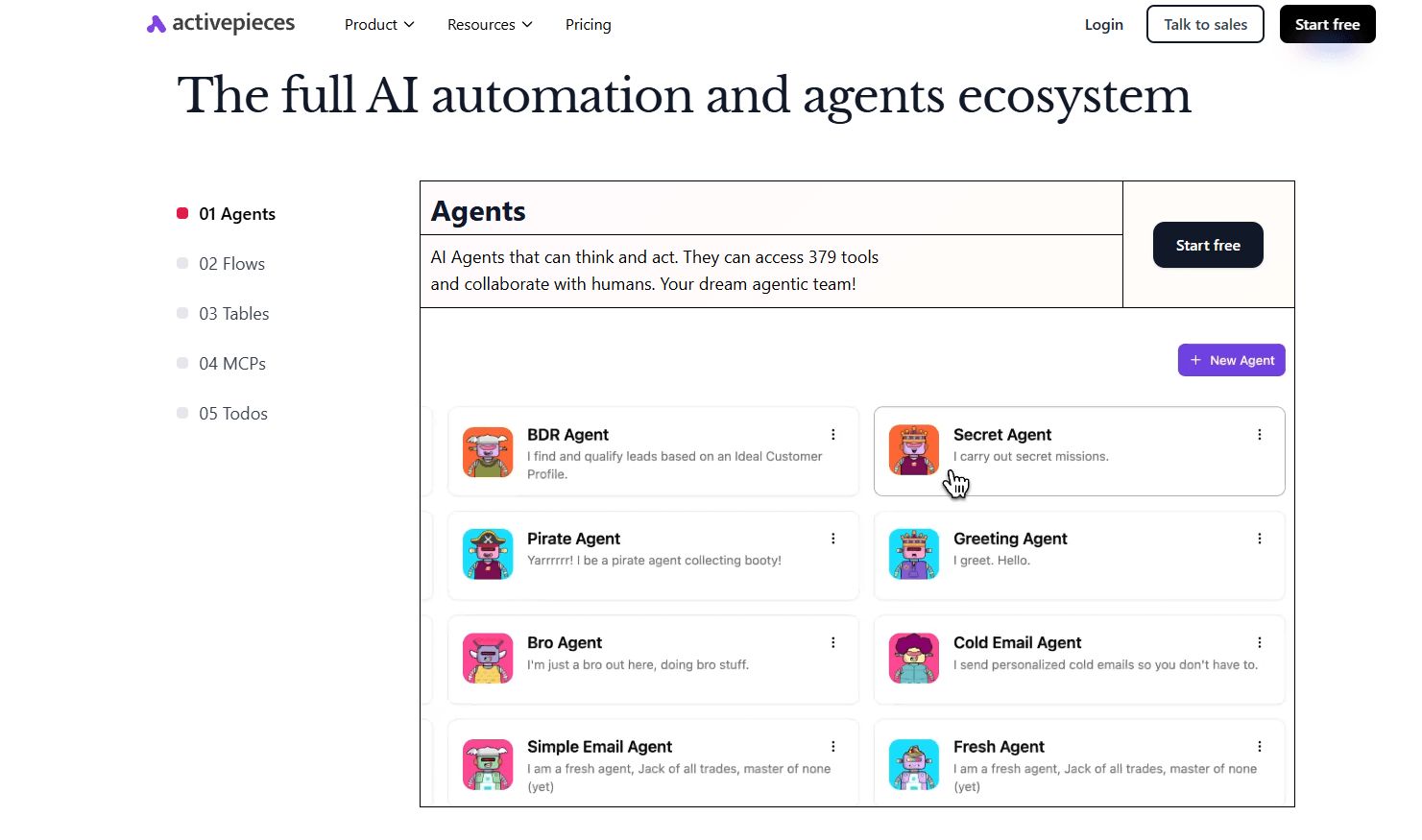
Activepieces gives you one place to connect all your apps and put repetitive work on autopilot. You don’t need to hop between tools or spend hours setting up rules by hand.
The no-code builder makes it simple for anyone to create flows, while developers can go deeper with TypeScript if they want more control. That mix means both technical and non-technical teams can actually use it every day without friction.
It offers over 421 integrations, and the number keeps increasing since new pieces get added by the community all the time. You can plug in Google Calendar, Microsoft Teams, CRM systems, or marketing apps and get them working together in a few clicks.
For a marketing team, that might mean setting up automations for social posts and lead nurturing. On the other hand, sales teams can sync new leads across tools and automatically create follow-ups.
If you’re managing the same task across different apps, Activepieces keeps everything in sync, so you’re not stuck updating data twice.
Begin your free journey with Activepieces and unlock next-level productivity!
FAQs About AI Productivity Tools
Does ChatGPT actually increase productivity?
Yes, ChatGPT increases productivity by handling routine writing, research, and brainstorming tasks quickly, letting people focus on more complex and creative work.
What is productivity AI?
Productivity AI is a category of tools that automate or optimize workflows, reduce repetitive tasks, and provide smart assistance so individuals and teams can work smarter and save hours.
How can AI maximize productivity?
AI maximizes productivity by using machine learning and automation to handle time-consuming tasks, provide real-time suggestions, and streamline collaboration across existing tools and workflows.
How can AI track productivity?
AI tracks productivity by analyzing calendars, meeting notes, and task data to measure time spent, identify patterns, and highlight areas where focus time could be improved.


